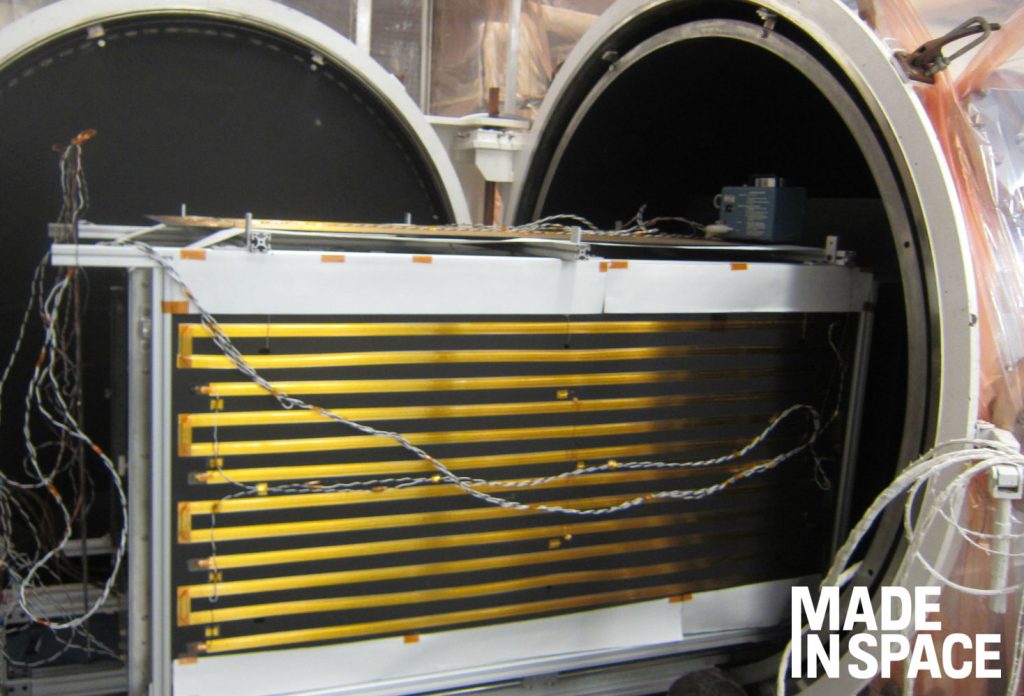Technologies inside the Archinaut, a spider-like 3D printing satellite developed by off-world manufacturing company Made In Space, have been declared “prepared to operate in space.” Through testing in a Low Earth Orbit (LEO) simulation, Made In Space demonstrated the Archinaut’s ability to manufacture and assemble a variety of structures.
Andrew Rush, President & CEO of Made In Space, comments, “We are very proud of our team for achieving this critical proof point that ultimately lines us up for operational missions with customers in both government and commercial sectors.”
“We look forward to the next steps of preparing Archinaut-enabled missions for flight.”
Off-world fabrication
Though perhaps better known as the robotic-arm enabled structure seen in the video below, the Archinaut project actually encompasses the development of two systems, Archinaut: ULISSES and Archinaut: DILO.
The main differentiator between the two technologies is that ULISSES is used to fabricate and assemble frame-like structures. Whereas DILO is specifically devised for the assembly of large reflectors.
Regardless of end use, 3D printing is an essential part of both Archinaut systems. In ULISSES, additive manufacturing is used to produce the connecting nodes and beams required for structural assembly. In DILO, the technology is applied to build a boom used to stabilize the reflector, as in a satellite dish.
Archinaut 3D printing capabilities are provided by the company’s Extended Structure Additive Manufacturing Machine (ESAMM), which completed on-Earth tests in Summer 2017. The following year, this same system also attained a Guinness World Record for producing a 37.7 meter-long beam deemed the “longest 3D printed non-assembled piece.”
A camera tracking two thirds of the ESAMM’s record-breaking, 3D printed beam. Original clip via Made In Space.
Coming soon to a Low Earth Orbit near you
In Made In Space’s most recent ground tests, publicly announced March 12, 2019, it appears the company has successfully demonstrated low gravity 3D printing capabilities of the ULISSES system. The company states, “While inside the vacuum, operations were monitored and inspected by an internally developed camera system to validate proper printing and assembly operations.”
“MIS demonstrated autonomous reversible connection and joining techniques of 3D printed parts and other pre-fabricated components such as nodes and trusses via a robotic arm system and end effector designed for in-space assembly operations.”
In addition, this test also validated the the repair ability of Archinaut robotics, which “can be integrated into small sats for payload retrievals and installations.”

Collaborating with Made In Space on the Archinaut project are American global aerospace and defense company Northrop Grumman, and Oceaneering Space Systems, that specializes in the production of in-space robotics. It is funded in part by NASA’s Space Technology Mission Directorate. The entities are united in the pursuit of systems that can reduce the costly and challenging, if not impossible, feat of launching large structures into space.
Rush concludes, “This technology will contribute to a more sophisticated low earth economy and lay the groundwork for more advanced commercial utilization of space.”
For more of the latest additive manufacturing in aerospace applications subscribe to our free newsletter, like us on Facebook and follow us on Twitter. Looking for a job in the industry? Visit our 3D Printing Jobs board.
Featured image shows a model of the Made In Space satellite making Archinaut: ULISSES. Photo via Made In Space



